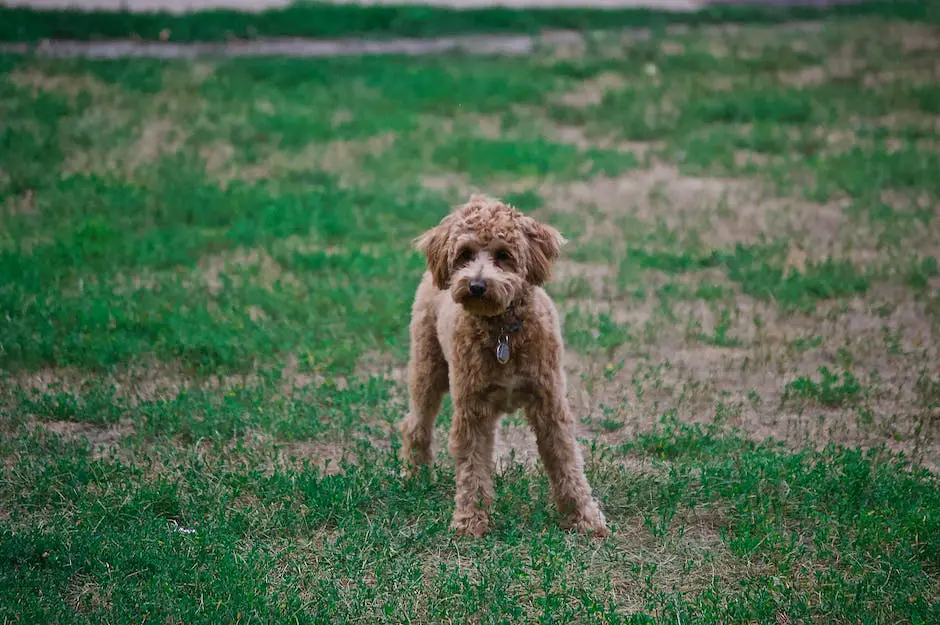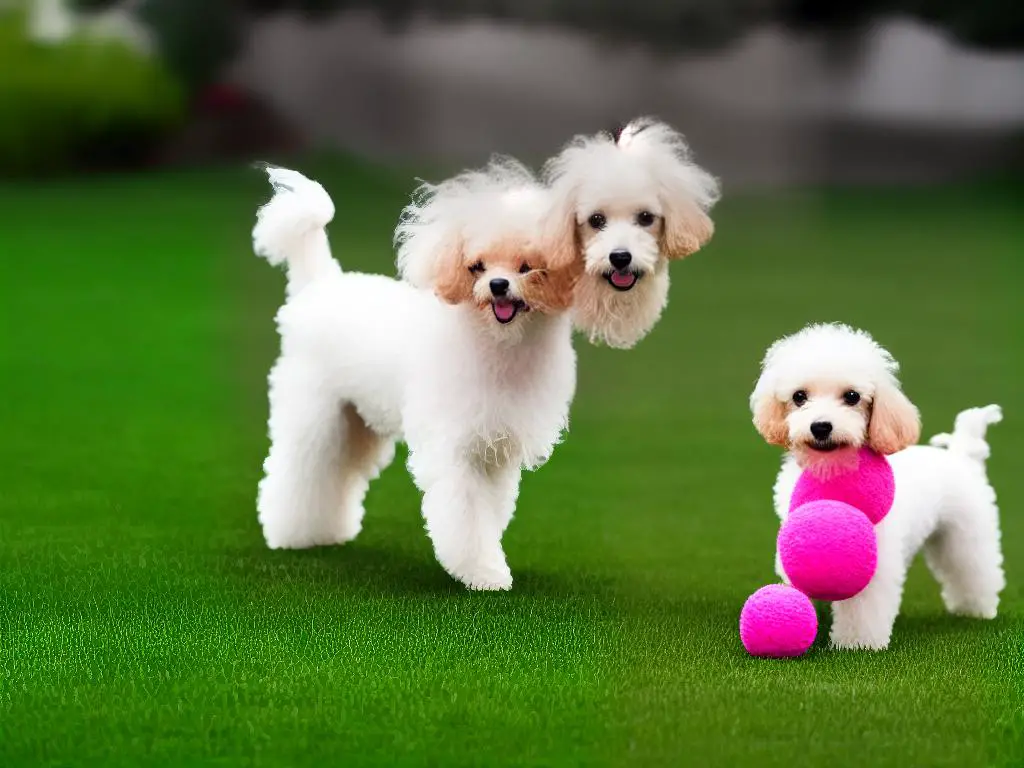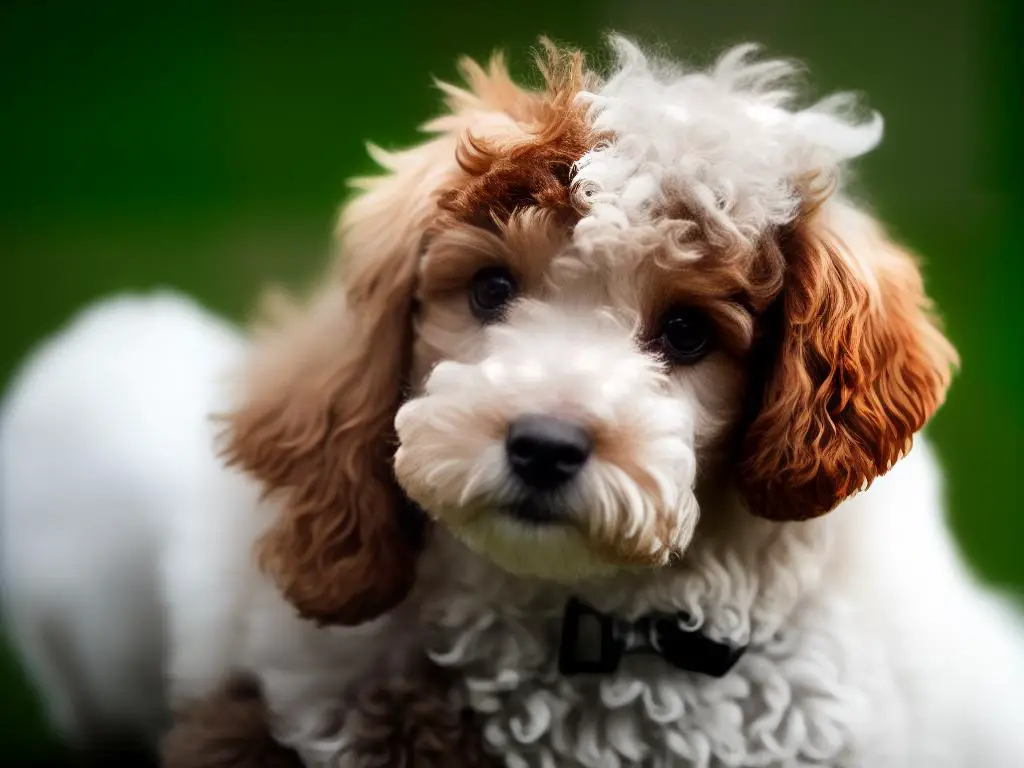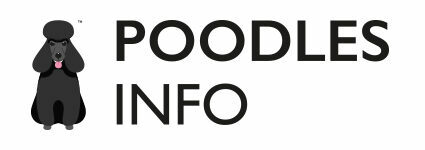Effective Teacup Poodle Potty Training Strategies
Navigating the art of potty training your teacup poodle can be a daunting task for many, yet with the right knowledge and approach, it can successfully be accomplished. Understanding your tiny companion’s behavior is the key to establishing effective potty training techniques. This insightful discourse aims to unravel the understanding of typical canine behavior, particularly of teacup poodles, to better sense their clues when they need to relieve themselves. Additionally, it unveils a variety of potty training techniques specifically designed for their size and temperament. Ensuring optimal health and diet is also paramount as they greatly impact a poodle’s potty training and routine. As you feed your poodle, understanding which foods constitute a healthy diet and how they influence your poodle’s digestive health is crucial.
Understanding Canine Behaviour
Introduction: Understanding the Behaviour of Your Teacup Poodle
Your teacup poodle, like any other dog, communicates their needs to you through their behavior. Before starting the potty training process, understanding common instincts and behaviour patterns in poodles is crucial.
Recognizing the Toilet Signs in Poodles
Most poodles will exhibit certain signs when they need to use the bathroom. Here are some things to look out for:
- Whining: Poodles often whine when they need to go to the bathroom. If your poodle starts whining out of the blue, it’s likely time for a bathroom break.
- Pacing: Many dogs pace back and forth when they’re in need of a bathroom break. If your poodle is pacing more than usual, they might need to relieve themselves.
- Sniffing and Circling: Dogs often sniff the ground or circle a particular area when they need to go to the bathroom. If your dog is showing either of these behaviors, it’s time to take them outside.
- Barking or Scratching at the Door: Sometimes, dogs will bark or scratch at the door when they need to go outside to use the bathroom.
Understanding these signs can significantly aid your potty training efforts.
Poodles’ Natural Instincts
Poodles, like other dogs, have a strong natural instinct to keep their den or living space clean. Because of this, your teacup poodle will naturally want to avoid soiling the area where they sleep or eat. This instinct can be utilized when potty training your puppy or adult poodle. Establishing a designated spot outside the house as their ‘bathroom’ will make use of this instinct, and with time, they will associate this spot with relieving themselves.
Regular Feeding Leads to Regular Bathroom Breaks
One factor that can affect your poodle’s potty training is their feeding habits. Regular feeding schedules can help regulate their bathroom schedule. Most dogs typically need to go to the bathroom a few minutes to an hour after eating.
The Importance of Consistency and Patience in Potty Training
Teacup poodles are intelligent, making them relatively easy to train. However, like all dogs, they require consistency and patience during the training process. Always respond positively when your poodle successfully goes to the bathroom in the designated spot, and avoid punishing or scolding them for accidents.
Remember, learning and understanding your teacup poodle’s natural behavior takes time, but it is a crucial step in successful potty training.

Potty Training Techniques
Understanding Teacup Poodles: A Distinct Temperament for Potty Training
Teacup Poodles, unlike their standard or miniature counterparts, have a unique temperament. Their small size and delicate status make them a bit more sensitive and require specialized care when setting up a potty training schedule. But don’t fret! These little companions learn fairly quickly when guided with proper training techniques. Here’s your comprehensive guide to potty training your teacup poodle.
Setting Up a Routine: Pody Training Starts with Consistency
A consistent routine is a key to successfully potty train your teacup poodle. Puppies typically need to potty after they eat, drink, play, and wake up from nap. Recognizing these elements of their routine can help you pinpoint when to take them outside to potty.
Start by setting a specific feeding schedule in the morning, midday, and evening. About 15-30 minutes after your pup eats, take them outside to their potty spot. Also, make sure they have ample opportunities to go outside throughout the day, like after playtime or naps.
Using Potty Training Aids: Making the Process Easier
Potty training aids can be a significant help when training your teacup poodle. Potty pads, for example, can give your pup an acceptable place to eliminate indoors if getting outside isn’t always feasible. Slowly transition the pad nearer to the door and eventually outside to help your pup understand that outside is the desired potty place.
Another great tool is a crate. Crates can discourage your poodle from eliminating, as dogs naturally don’t like to potty where they sleep. Make sure the crate isn’t too large – it should only be big enough for your pup to stand, turn around, and lie down.
Positive Reinforcement: The Power of Rewards
In training teacup poodles, or any dog breed for that matter, positive reinforcement works wonders. Every time your poodle successfully goes potty in the right spot, praise them enthusiastically and offer a small treat as a reward. This will encourage them to repeat the behavior.
Aside from treats, other forms of positive reinforcement include a favorite toy, some playtime, or a cheerful praise.
Managing Accidents: They will Happen and It’s Okay
Potty training doesn’t happen overnight. Accidents will happen, and it’s crucial to manage these incidents calmly. Don’t punish or scold your teacup poodle when they have an accident. Instead, clean up without fuss and continue to encourage good behavior.
In Conclusion
Potty training a teacup poodle requires some patience, consistency, and a lot of love. Remember, your little furry friend is trying its best to understand what you want. So keep your expectations realistic and celebrate your small victories along the way!

Health and Diet Factors
Understanding Teacup Poodle’s Digestive Health
Understanding the digestive health of your Teacup Poodle is an essential part of their potty training. Dogs have different digestive patterns and responding to them can lead to a successful potty training process.
Teacup Poodles are small and their digestive systems are sensitive. Therefore, it’s crucial to understand what foods they should and shouldn’t eat to promote good digestive health and lead to predictable potty routines.
What Foods Promote Good Digestive Health?
Feeding your Teacup Poodle a balanced diet suitable for their size, age, and health status is key. Opt for high-quality dog food, specifically designed for small breeds. These dog foods contain the right balance of nutrients needed for your Teacup Poodle’s health and development.
Dietary fiber is essential for promoting good digestive health, as it aids in the movement of food through the digestive system, thus regulating bowel movements. Look for high-quality dog foods that list sources of fiber, such as sweet potatoes, peas, carrots, or apples.
Protein is also critical as it helps build and repair body tissues. The animal-based protein in dog food should be listed as the first ingredient.
Ensure that the dog food also contains prebiotics and probiotics to support the gut flora, which aids digestion.
However, avoid feeding your Teacup Poodle foods like grapes, raisins, onions, chocolate, and anything with caffeine, as these are toxic to dogs.
How Often Should You Feed a Teacup Poodle?
Your Teacup Poodle’s feeding schedule also affects their potty routine. Generally, puppies need to be fed more frequently than adult dogs as they are growing and need the nutrients.
For Teacup Poodles that are two to four months old, they should be fed four times a day. For those that are four months to full grown, feed them three times daily. Once they reach adulthood, feeding them twice a day should suffice.
Stick to regular feeding times each day. Predictable feeding leads to predictable potty times, making it easier for both you and your pooch.
Paying Attention To Your Poodle’s Health
The health of your Teacup Poodle can drastically impact their potty routine. Conditions such as gastrointestinal issues, urinary tract infections, and age-related issues can all break the routine you’ve worked so hard to establish.
If you notice any sudden changes in your poodle’s toileting routine or their feces, it’s best to consult with a vet to rule out any potential health problems.
Remember, understanding and accommodating your Teacup Poodle’s dietary needs and health status is fundamental to effective potty training. With patience, consistency, and the correct diet, your Teacup Poodle will be successfully potty trained in no time.

After gaining substantial knowledge about the connection between your teacup poodle’s behavior, their diet, health and their potty routines, you are on the right path to successfully potty train your pet. The tested potty training techniques mentioned coupled with adequate attention to your poodle’s diet are quintessential for your pet’s overall growth and development. Remember that patience, persistence, and positivity are your best allies on this rewarding journey. As responsible pet owners, we hope this exploration brings you closer to mastering the art of potty training your beloved teacup poodle, leading to a happier and healthier relationship with your tiny companion.
